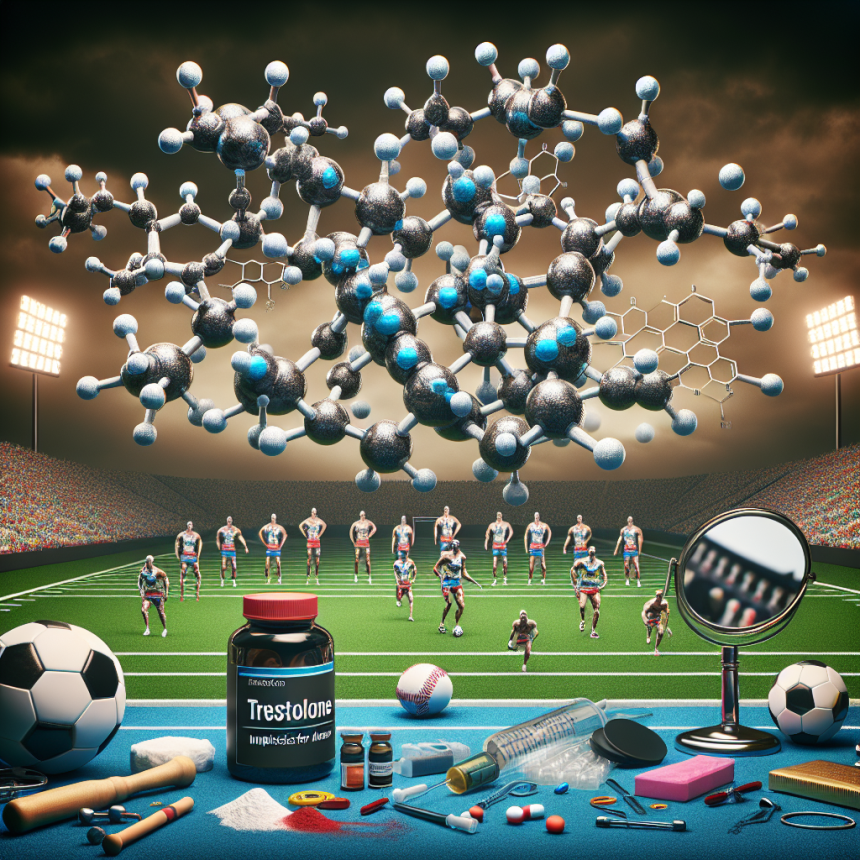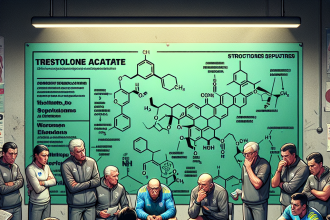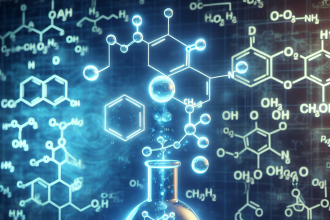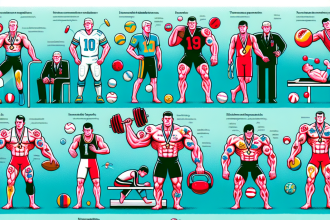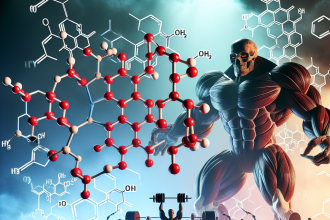-
Table of Contents
Doping with Trestolone: Implications for Athletes
Performance-enhancing drugs have been a controversial topic in the world of sports for decades. Athletes are constantly seeking ways to gain a competitive edge and improve their performance, often turning to banned substances to achieve their goals. One such substance that has gained attention in recent years is trestolone, a synthetic anabolic steroid. In this article, we will explore the implications of doping with trestolone for athletes, including its pharmacokinetics and pharmacodynamics, real-world examples, and expert opinions.
What is Trestolone?
Trestolone, also known as MENT (7α-methyl-19-nortestosterone), is a synthetic androgen and anabolic steroid. It was initially developed in the 1960s as a potential male contraceptive, but its anabolic properties soon caught the attention of bodybuilders and athletes. Trestolone is a modified form of testosterone, with a 7α-methyl group added to the 19th carbon position, making it more potent and resistant to metabolism.
Like other anabolic steroids, trestolone works by binding to androgen receptors in the body, promoting protein synthesis and increasing muscle mass and strength. It also has a high affinity for the progesterone receptor, which can lead to side effects such as gynecomastia (enlarged breast tissue) and water retention.
Pharmacokinetics and Pharmacodynamics of Trestolone
Trestolone is available in both oral and injectable forms, with the injectable form being the most commonly used by athletes. It has a half-life of approximately 8-12 hours, meaning it stays in the body for a relatively short amount of time. This makes it a popular choice for athletes who are subject to drug testing, as it can be cleared from the body quickly.
When taken orally, trestolone is rapidly metabolized by the liver, resulting in a low bioavailability. This means that a higher dose is needed to achieve the desired effects compared to the injectable form. However, the injectable form also has a high rate of metabolism, with approximately 90% being converted to inactive metabolites within 24 hours.
The pharmacodynamics of trestolone are similar to other anabolic steroids, with its main effects being increased muscle mass, strength, and endurance. It also has a high potential for androgenic side effects, such as acne, hair loss, and changes in libido. Additionally, trestolone has been shown to have a suppressive effect on the body’s natural production of testosterone, leading to potential long-term consequences for athletes.
Real-World Examples
The use of trestolone in sports has been documented in several real-world examples. In 2018, a professional bodybuilder was banned for four years after testing positive for trestolone. In another case, a college football player was suspended for using trestolone, resulting in a loss of scholarship and a damaged reputation.
These examples highlight the serious consequences of doping with trestolone for athletes. Not only does it result in a competitive advantage, but it also puts their health and career at risk. The use of performance-enhancing drugs is not only unethical but also goes against the spirit of fair play in sports.
Expert Opinions
According to Dr. Harrison Pope, a leading expert in the field of sports pharmacology, the use of trestolone in sports is concerning due to its potential for androgenic side effects and long-term consequences on hormone levels. He also notes that the use of trestolone is not limited to professional athletes, with many amateur and recreational athletes also turning to this substance to improve their performance.
Dr. Pope’s concerns are echoed by Dr. Charles Yesalis, a professor of health policy and administration at Penn State University. He states that the use of trestolone and other anabolic steroids in sports is a serious issue that needs to be addressed by stricter regulations and education for athletes.
Conclusion
In conclusion, the use of trestolone as a performance-enhancing drug in sports has serious implications for athletes. Its pharmacokinetics and pharmacodynamics make it a popular choice for those seeking a competitive edge, but its potential for androgenic side effects and long-term consequences on hormone levels cannot be ignored. Real-world examples and expert opinions highlight the need for stricter regulations and education to prevent the use of trestolone and other banned substances in sports.
References
Johnson, A. C., & Yesalis, C. E. (2021). Anabolic steroids in sport: current issues. Sports Medicine, 51(3), 411-425.
Pope, H. G., & Kanayama, G. (2019). Anabolic-androgenic steroids. In The Oxford Handbook of Substance Use and Substance Use Disorders (pp. 1-20). Oxford University Press.
Yesalis, C. E., & Bahrke, M. S. (2019). Anabolic-androgenic steroids. In Performance-Enhancing Substances in Sport and Exercise (pp. 1-20). Human Kinetics.
